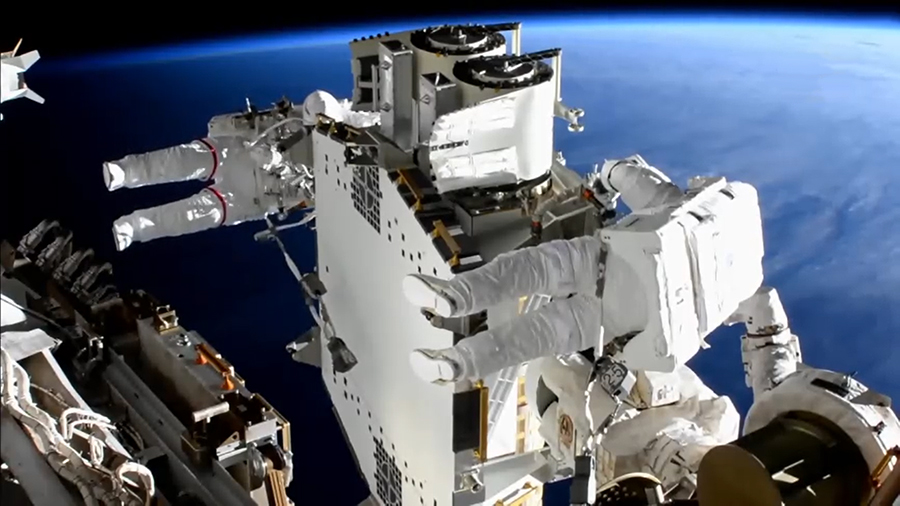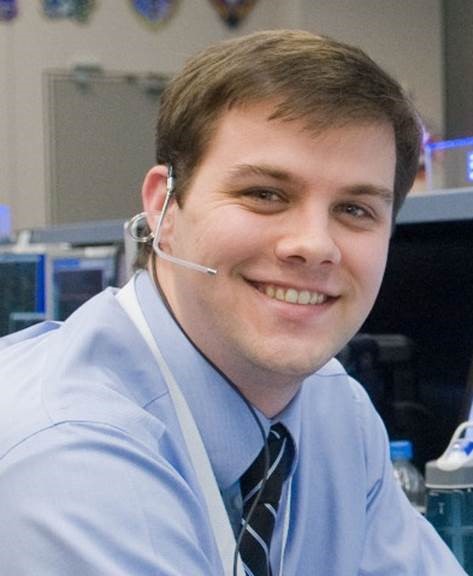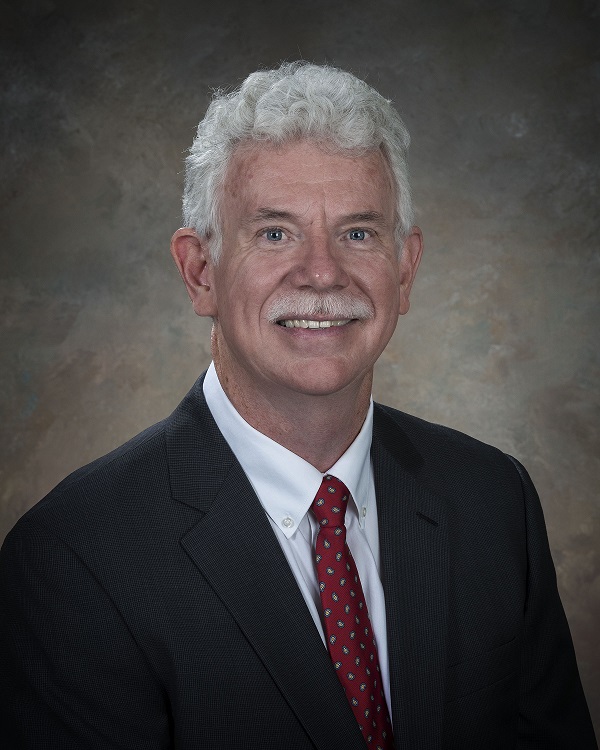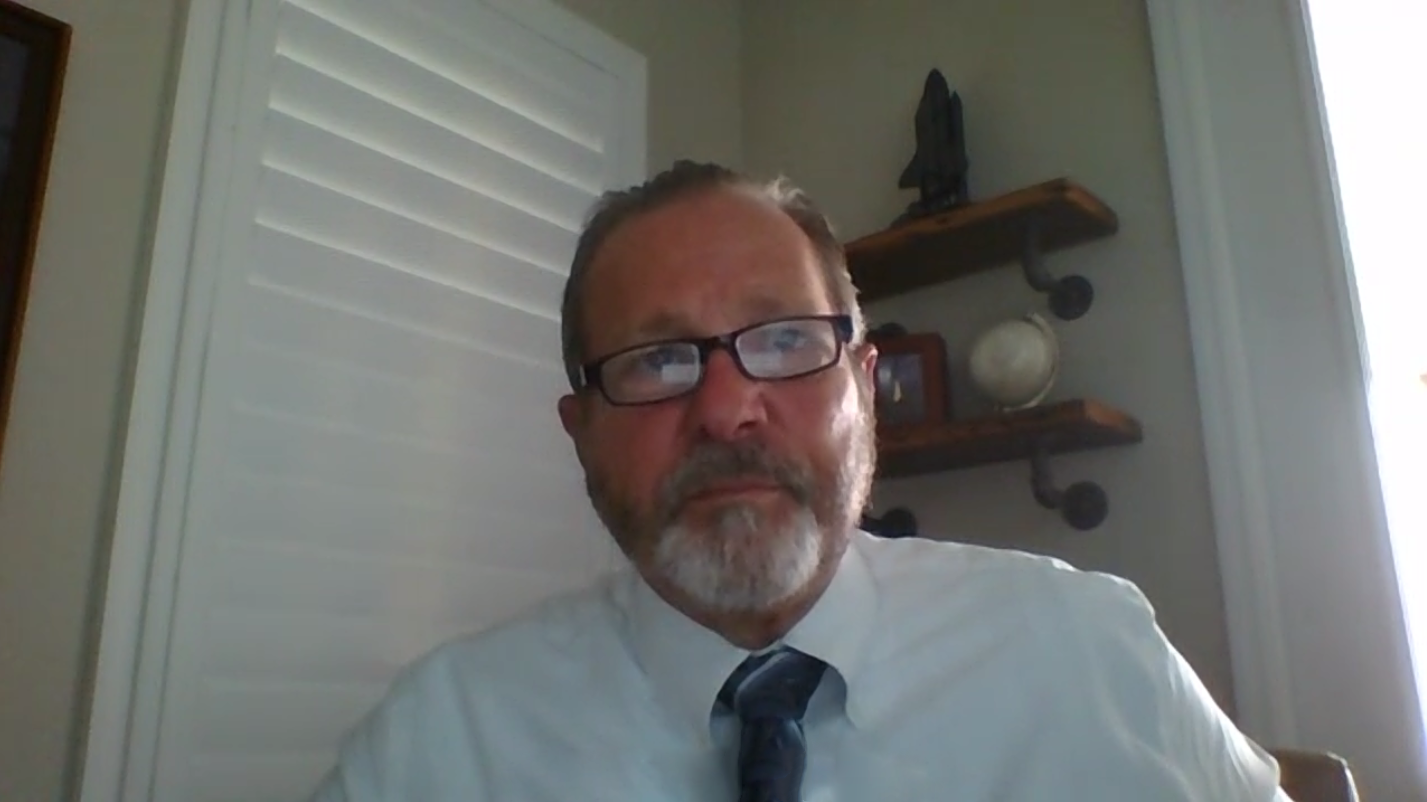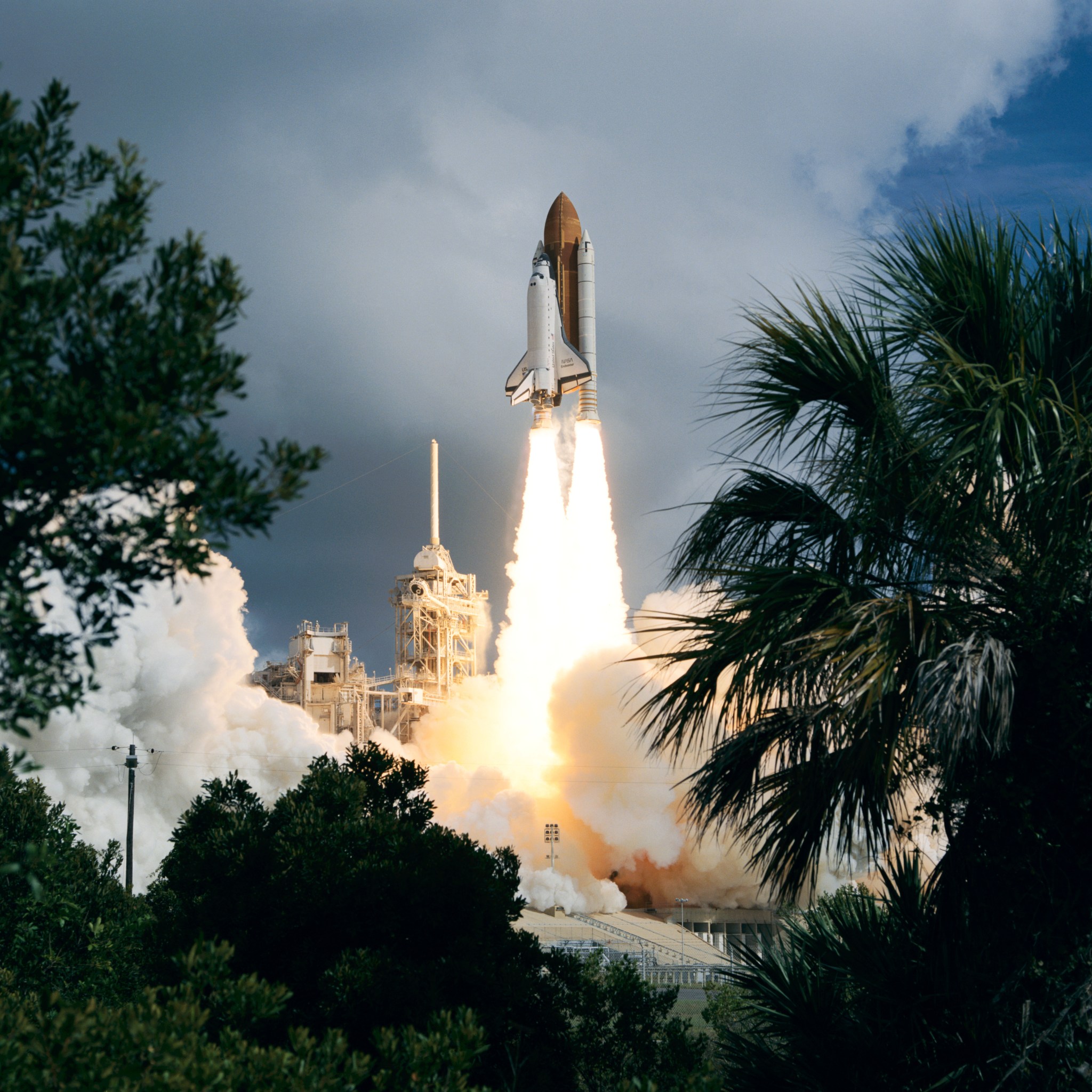Pam Melroy Sworn in as NASA Deputy Administrator
NASA Deputy Administrator Pam Melroy, the first female astronaut to serve in the position, has joined NASA Administrator Sen. Bill Nelson in providing the nation’s space agency with overall leadership, planning, and policy direction. She was sworn in June 21.
“It is a joy to be back in the NASA family, the smartest and most dedicated workforce of any place that I’ve ever worked,” Melroy said. “I’m very honored to be teamed with Administrator Nelson and Associate Administrator Bob Cabana. It’s our intention not just to lead today’s NASA, but also lead us forward into the future and support the generations of fantastic things that NASA will continue to do.”
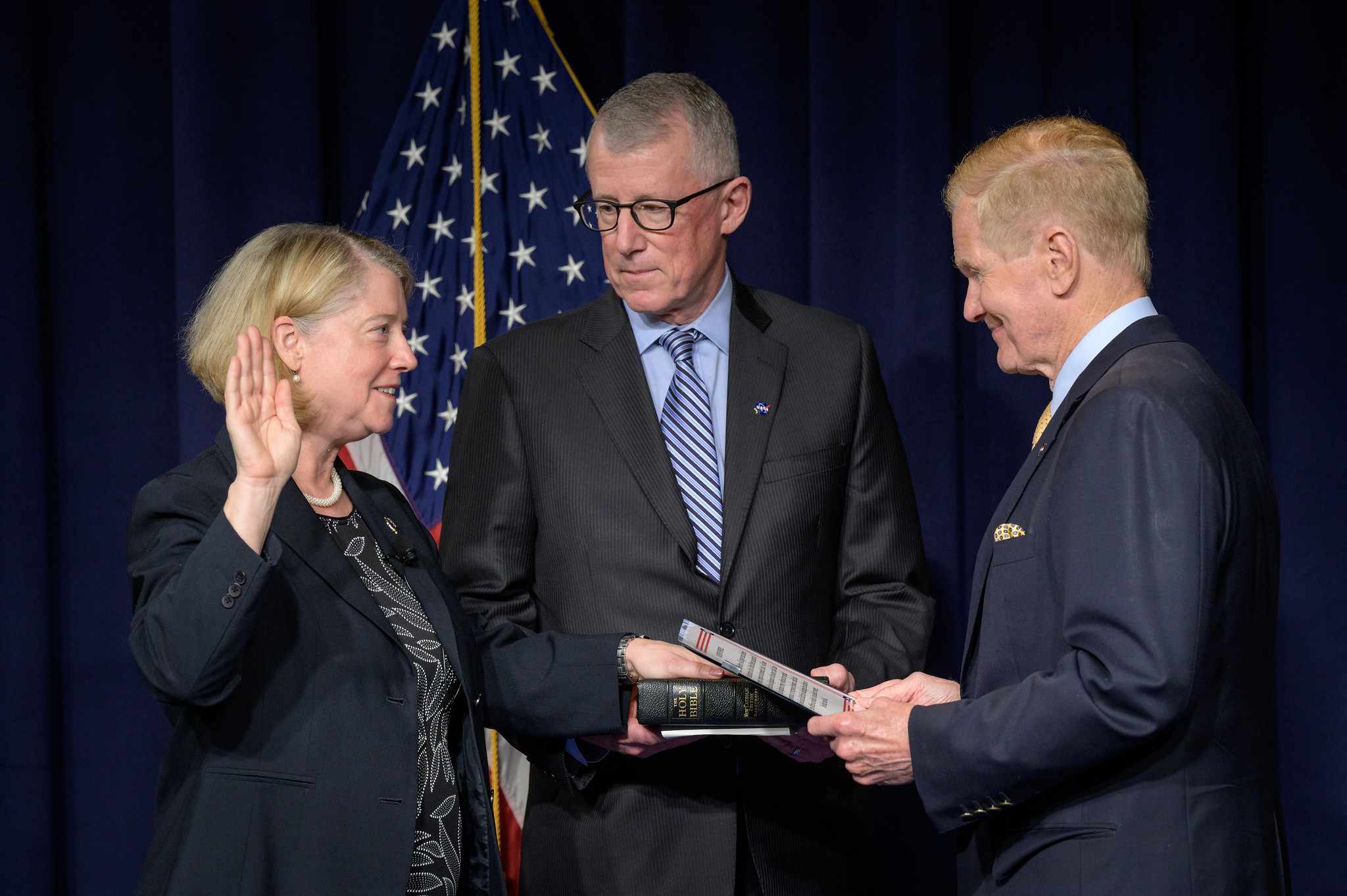
Melroy was confirmed by the U.S. Senate on June 17, following her April nomination by President Joe Biden.
“What a grand occasion for us,” Nelson said. “Pam is extremely skilled, experienced, and ready for this job.”
Melroy will perform duties delegated by Nelson, assist him in making final agency decisions, and act in his absence, performing all necessary functions to govern NASA operations.
One of only two women to command a space shuttle, Melroy logged more than 38 days in space. She was commander of the STS-120 space shuttle mission in 2007 and piloted two shuttle flights, STS-92 in 2000 and STS-112 in 2002. All three of her missions were assembly missions to build the International Space Station.
After graduating from U.S. Air Force Test Pilot School in 1985, Melroy logged more than 6,000 flight hours in more than 50 different aircraft. She is a veteran of Operation Desert Shield/Desert Storm in Kuwait in 1990-1991 and Operation Just Cause in Panama in 1989-1990, with more than 200 combined combat and combat support hours.
Following more than 20 years in the Air Force and as a NASA astronaut, Melroy took on a number of leadership roles, including at the Federal Aviation Administration, the Defense Advanced Research Projects Agency, and as an advisor to the Australian Space Agency. She also was an independent consultant and a member of the National Space Council’s Users Advisory Group.
She earned a bachelor’s degree in physics and astronomy from Wellesley College in Wellesley, Massachusetts, in 1983, and a master’s degree in Earth and planetary sciences from the Massachusetts Institute of Technology in Cambridge in 1984.
Spacewalkers Complete First Roll-Out Solar Array Installation
NASA astronaut Shane Kimbrough and European Space Agency astronaut Thomas Pesquet concluded a spacewalk June 20, after 6 hours and 28 minutes. In the eighth spacewalk of the year outside the International Space Station, the astronauts completed the deployment of a new ISS Roll-Out Solar Array on the far end of the left side of the station’s P6 backbone truss structure.
Kimbrough and Pesquet successfully unfolded the solar array, bolted it into place, and connected cables to the station’s power supply to complete deployment. Additionally, they removed and stowed hardware in preparation for releasing the second solar array from the flight support structure for installation. The pair will work toward the second solar array upgrade – this one on the P6 truss’ 4B power channel – during another spacewalk, tentatively scheduled for June 25.
The duo previously conducted a 7-hour, 15-minute spacewalk June 16 to install the solar array into its mounting bracket.
NASA is augmenting six of the eight existing power channels of the space station with new solar arrays to ensure a sufficient power supply is maintained for NASA’s exploration technology demonstrations for Artemis missions and beyond as well as utilization and commercialization.
This was the eighth spacewalk for Kimbrough, the fourth for Pesquet, and the fourth they have conducted together. Kimbrough has spent a total of 52 hours and 43 minutes spacewalking, and Pesquet’s total spacewalking time is 26 hours and 15 minutes.
The 60-foot-long roll out solar arrays have successfully deployed as the space station soared over the United States. #AskNASA | https://t.co/yuOTrYN8CV pic.twitter.com/6mQOQ2Fj5n
— International Space Station (@Space_Station) June 20, 2021
Space station crew members have conducted 240 spacewalks in support of assembly and maintenance of the orbiting laboratory. Spacewalkers have now spent a total of 63 days and 56 minutes working outside the station.
In November 2020, the space station surpassed its 20-year milestone of continuous human presence, providing opportunities for unique research and technological demonstrations that help prepare for long-duration missions to the Moon and Mars and also improve life on Earth. In that time, 244 people from 19 countries have visited the orbiting laboratory that has hosted nearly 3,000 research investigations from researchers in 108 countries and areas. The Payload Operations Integration Center at NASA’s Marshall Space Flight Center oversees all experiments and science communications aboard the space station.
NASA, Boeing Progress Toward July Launch of Second Starliner Flight Test
NASA and Boeing are continuing preparations ahead of Starliner’s second uncrewed flight to prove the system can safely carry astronauts to and from the International Space Station.
Teams inside the Starliner production factory at NASA’s Kennedy Space Center recently began fueling the Starliner crew module and service module in preparation for launch of Orbital Flight Test-2, or OFT-2, at 1:53 p.m. CDT on July 30. The fueling operations are expected to complete this week as teams load propellant inside the facility’s Hazardous Processing Area and perform final spacecraft checks.
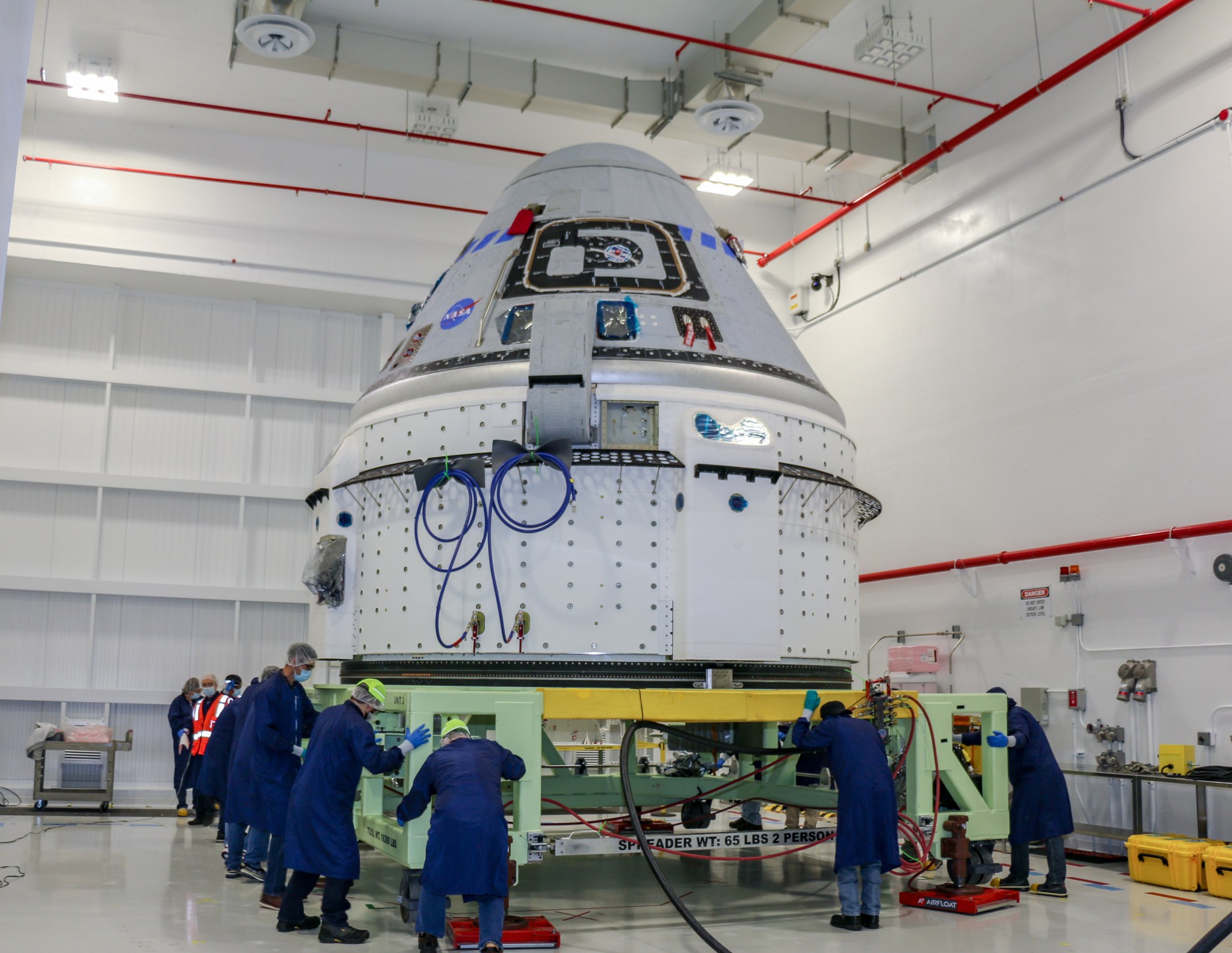
Once fueling operations are complete, teams from Boeing and United Launch Alliance will prepare to transport Starliner to the Vertical Integration Facility at Space Launch Complex-41 on Cape Canaveral Space Force Station for mating with ULA’s Atlas V rocket. Beginning this week, ULA will begin stacking the Atlas V rocket at the Vertical Integration Facility during an operation called Launch Vehicle on Stand.
In preparation for Starliner’s next flight, NASA and Boeing have closed all actions recommended by the joint NASA-Boeing Independent Review Team, which was formed as a result of Starliner’s first test flight in December 2019. The review team’s recommendations included items relating to integrated testing and simulations, processes and operational improvements, software requirements, crew module communication system improvements, and organizational changes. Boeing has implemented all recommendations, even those that were not mandatory, ahead of Starliner’s upcoming flight.
“I am extremely proud of the NASA and Boeing Starliner teams as they methodically work toward the OFT-2 mission next month with final checks of the crew module and service module hardware and software as we prepare for this important uncrewed test mission,” said Steve Stich, NASA Commercial Crew Program manager. “Closing all of the Independent Review Team findings for the software and communications systems is a huge milestone for the Commercial Crew Program and included many long hours of testing and reviews by our dedicated Boeing and NASA teams during this Covid-19 pandemic.”
In the weeks ahead, mission control teams in Florida, Alabama, and Texas will continue conducting simulated mission dress rehearsals for the uncrewed OFT-2 and follow-on crewed missions. Starliner’s landing and recovery teams also will perform an on-site checkout of one of the vehicle’s landing zones.
During the OFT-2 mission, Starliner will test its unique vision-based navigation system to autonomously dock with the space station and deliver approximately 440 pounds of cargo and crew supplies for NASA. Starliner is expected to spend five to 10 days in orbit before undocking and returning to Earth, touching down on land in the western United States.
Provided Starliner’s second uncrewed mission meets all necessary objectives, NASA and Boeing will look for opportunities toward the end of this year to fly Starliner’s first crewed mission, the Crew Flight Test, to the space station with NASA astronauts Barry “Butch” Wilmore, Nicole Mann, and Mike Fincke aboard.
Boeing has designed and developed the Starliner spacecraft in support of NASA’s Commercial Crew Program to provide safe and sustainable commercial transportation services for crew and cargo to the space station and low-Earth orbit destinations.
The Human Exploration Development & Operations Office at NASAs Marshall Space Flight Center supports the Commercial Crew Program with engineers who have helped review critical design and development documentation. The team also helps provide oversight to safety standards for the rocket and spacecraft for data verification and certification. For the launch, members of the team will be present in the Huntsville Operations Support Center at Marshall and will work closely with Boeing and ULA teams at Kennedy and Johnson Space Center.
NASA’s Commercial Crew Program is working with industry through a public-private partnership to provide safe, reliable, and cost-effective transportation to and from the space station, which will allow for additional research time and will increase the opportunity for discovery aboard humanity’s testbed for exploration. The space station remains the springboard to space exploration, including future missions to the Moon and eventually to Mars.
Chris Buckley Certified as Payload Ops Director
Chris Buckley is the latest payload operations director certified by the Payload and Mission Operations Division at NASA’s Marshall Space Flight Center. Payload operations directors are real-time flight controllers for the International Space Station. They manage and direct the 24/7 operations of scientific payloads aboard the space station from the Payload Operations Integration Center at Marshall. The payload operations director is the single point of authority to the space station flight director at NASA’s Johnson Space Center for all of NASA’s payload operations. (NASA)
Todd May Named American Astronautical Society Fellow
Todd May, former director of NASA’s Marshall Space Flight Center, was recently named a fellow of the American Astronautical Society. May spent 27 years with NASA, retiring in 2018 after two years leading Marshall. His other positions at the center included deputy director, manager of the Space Launch System Program, and associate director, technical. He also spent a year as deputy associate administrator in the Science Mission Directorate at NASA Headquarters. Fellows were recognized for their impact on the space industry and the future of space exploration. See a list of all the new fellows here. (NASA/Emmett Given)
Navigating the Gradual Return to On-Site Work with Grace, Kindness
Dear Marshall family,
I hope you’re all doing well. The burdens and demands of the past 15 months have been difficult for many of us, and the news that things are finally beginning to open back up is very encouraging. I hope you’re looking forward to some time off work to relax and recuperate at some point this summer, and I also want to encourage you to continue to be cautious regarding COVID-19. While pandemic conditions appear to be significantly improved, generally speaking, we must all do our part to keep them moving in the right direction.
In light of these improving trends, the center has moved to Stage 2 of the NASA Framework for Return to On-Site Work. In last week’s virtual town hall, center leadership reminded us that while this move will allow some additional types of on-site work to resume, most people who have been teleworking will continue to do so. If you are returning to on-site work, or expect to go on-site anytime soon, please review the Safe at Work Protocol and abide by them to protect your own safety, and the safety of others.
The idea of returning to on-site work will no doubt be met with a wide variety of reactions. For some, it may raise significant concerns about health and safety. For others, it may be difficult to leave behind the convenience and flexibility of telework. For others still, it will be a great pleasure and relief to return to on-site work. Wherever your reaction, please keep in mind that everyone will not share your perspective.
Please be kind and show a little extra grace to those with differing. This is also important in regard to wearing face coverings on-site – the requirements for wearing face coverings have changed, but wearing one is allowed for those who prefer to do so. So please don’t jump to conclusions or become judgmental because someone is, or is not, wearing a face covering. If you are expected to return to working on-site, and feel that it is not safe for you to do so, please discuss the situation with your supervisor as soon as possible, to see if an alternative work arrangement is viable.
Another important thing to consider in returning to on-site work is that we’ve been away from it for over a year. Don’t expect that everything will be back to “normal” immediately, as it will take some time to adjust. Situational awareness is always important, but given the length of time that we’ve been away and doing things differently, situational awareness is now more important than ever. Office locations, equipment, procedures and more may have changed or evolved. Routines that used to be relatively automatic may require a good deal more effort and attention, now. Reacquaint yourself with equipment and procedures, and please take the time to ensure that you’re going about your work in a safe and attentive way. Help others when you can, and ask for help when you need it. And as always, if you see something that’s unsafe, speak up.
Please keep in mind that the Employee Assistance Program is here to help you in whatever ways we can. If you find yourself struggling with stress, anxiety, or other challenges to your wellbeing, or simply want to talk, please contact me at terry.w.sterry@nasa.gov or 256-544-7549, to arrange a time to meet.
Stay safe and well,
Dr. Terry Sterry
Licensed psychologist and Marshall Employee Assistance Program coordinator
For more information on Marshall’s Employee Assistance Program, visit the program’s page on Inside Marshall. For more information on NASA’s coronavirus response and teleworking, visit NASAPeople.
NASA Veteran, Former Jacobs Leader Michael Wetmore Delivers Virtual Shared Experiences Forum
Michael Wetmore, who spent two decades at NASA’s Kennedy Space Center before working with Jacobs Engineering as general manager of several NASA contracts, addresses attendees of the virtual Shared Experiences Forum, part of the Mission Success is in Our Hands lecture series, on June 17. Wetmore shared valuable safety knowledge and insights gained from his career, particularly during his time in the Navy and with NASA. “My experience with NASA was that we had the strongest procedural documentation compliance and willingness to allow time or money to get things right that I have experienced in my career,” he said. “If a safety issue was raised, we were going to stop and get it right before we moved forward.” The Mission Success Is in Our Hands initiative is a campaign led by the Safety and Mission Assurance Directorate at NASA’s Marshall Space Flight Center and partner Jacobs Engineering of Huntsville that promotes and strengthens Marshall’s focus on mission, hardware, and crew safety. (NASA)
NASA Launches Mission Equity, Seeks Public Input to Broaden Access
NASA is launching Mission Equity, a comprehensive effort to assess expansion and modification of agency programs, procurements, grants, and policies, and examine what potential barriers and challenges exist for communities that are historically underrepresented and underserved. NASA issued a request for information, entitled Advancing Racial Equity and Support for Underserved Communities in NASA Programs, Contracts and Grants. NASA will host a virtual public meeting June 29, during which NASA officials will discuss the request for information and corresponding agency goals. For more on the request for information, visit here. (NASA)
This Week in NASA History: 1st Flight of Spacehab – June 21, 1993
This week in 1993, space shuttle Endeavour, mission STS-57, launched from NASA’s Kennedy Space Center on a nine-day mission. STS-57 marked the first flight of Spacehab, a pressurized laboratory designed to more than double pressurized workspace for crew-tended experiments. Twenty-two experiments were flown, covering materials and life sciences and wastewater recycling experiments for space stations. Today, the Payload Operations Integration Center at NASA’s Marshall Space Flight Center serves as “science central” for the International Space Station, working 24/7, 365 days a year in support of the orbiting laboratory’s science experiments. After 20 years of continuous human presence, the space station remains the sole space-based proving ground and stepping stone toward achieving the goals of the Artemis program. The NASA History Program is responsible for generating, disseminating, and preserving NASA’s remarkable history and providing a comprehensive understanding of the institutional, cultural, social, political, economic, technological, and scientific aspects of NASA’s activities in aeronautics and space. For more pictures like this one and to connect to NASA’s history, visit the Marshall History Program’s webpage. (NASA)























